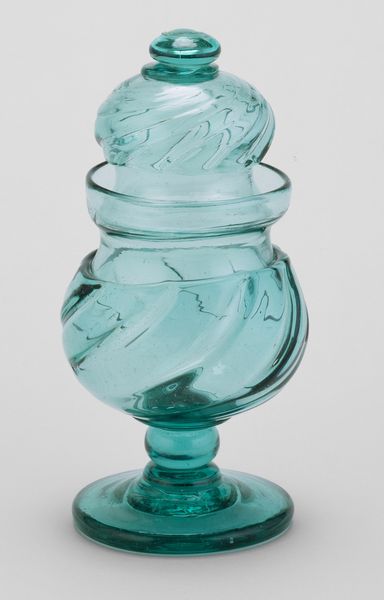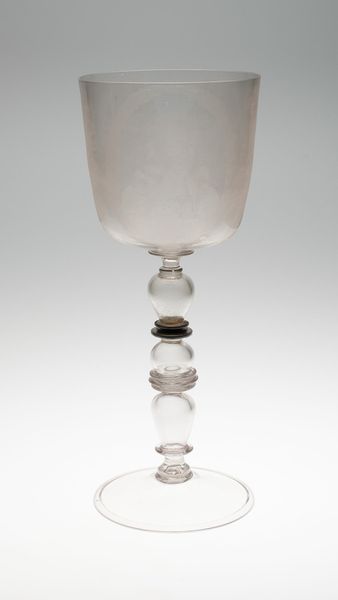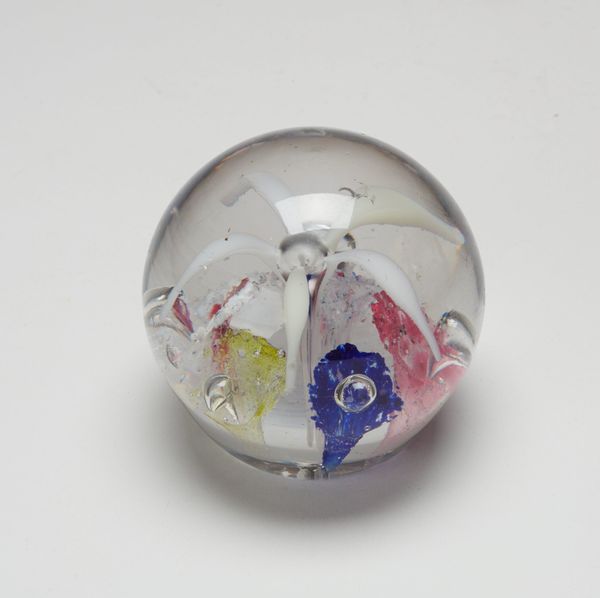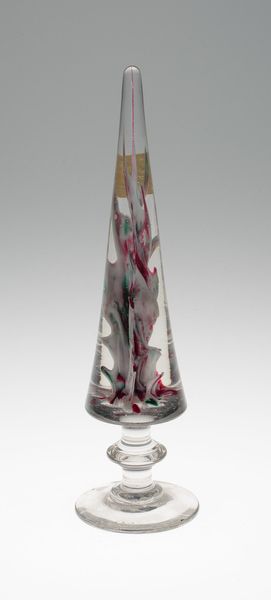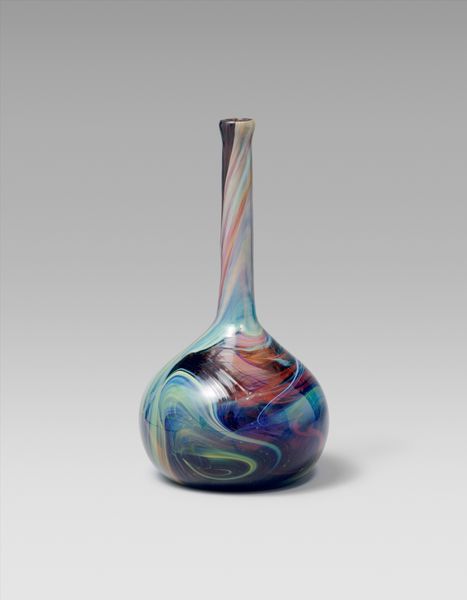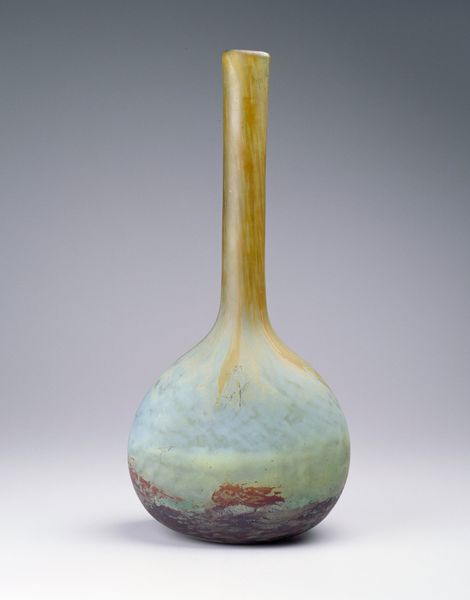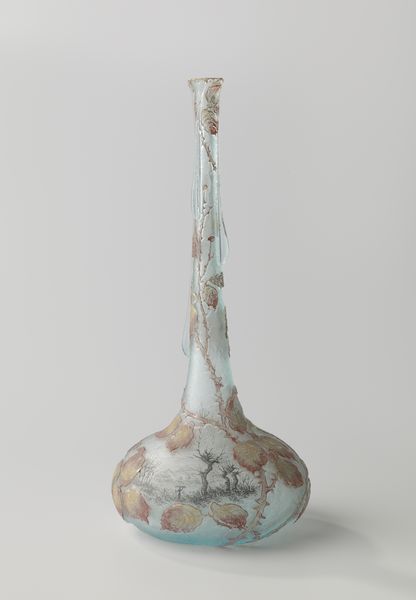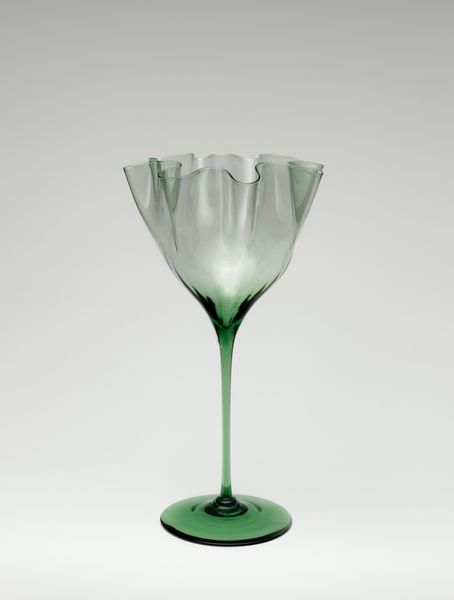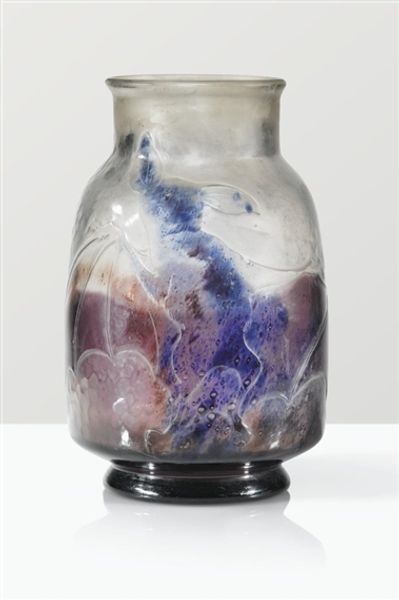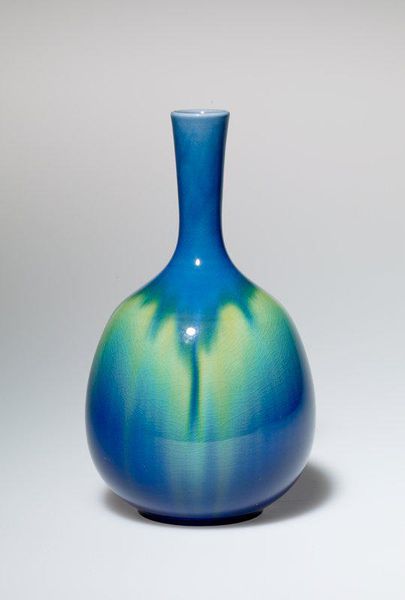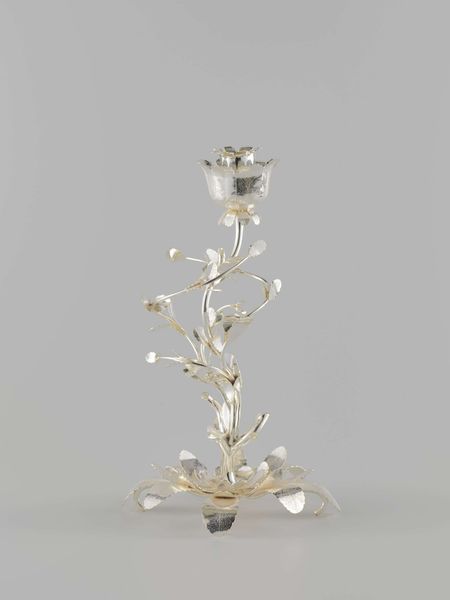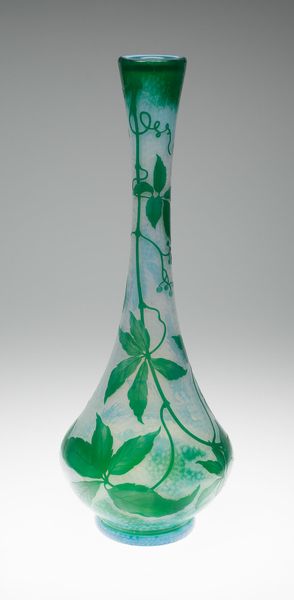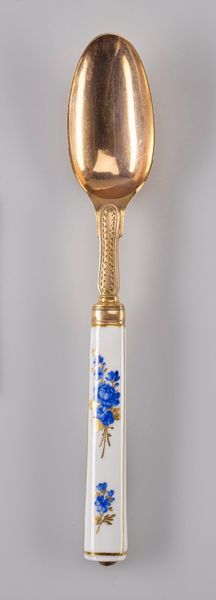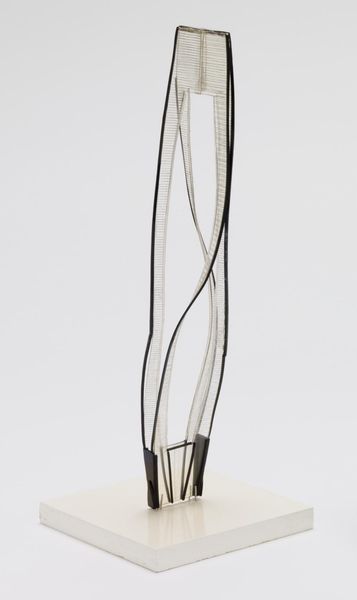
glass, sculpture
#
art-nouveau
#
glass
#
sculpture
Dimensions: 12 1/8 x 3 1/4 in. (30.8 x 8.26 cm)
Copyright: Public Domain
This elegant goblet was crafted in Germany by Friedrich Zitzmann, an artist who lived through the unification of Germany. The fluid shapes and translucent colours of the glass show the influence of the Art Nouveau movement, which embraced organic forms and artisanal techniques to challenge the industrial aesthetic of the late 19th century. But this isn't just an ornamental object. Drinking vessels have always been associated with social ritual and display. In the newly unified Germany, luxury goods like this goblet were purchased and displayed by wealthy families as emblems of national pride and personal status. The goblet also embodies a contradiction, its handmade quality signaled a rejection of mass production, but only the wealthy could afford such luxuries. When we look at art, we can ask: who had access to it, who was excluded, and how did art reflect social divisions? By consulting historical sources like design magazines, exhibition catalogs, and economic data, we can better understand the place of this beautiful object in its time.
Comments
minneapolisinstituteofart almost 2 years ago
⋮
Zitzmann's literal interpretation of a tulip in glass is part of an international period of glass experimentation that was part of the Art Nouveau movement, and that resulted in the widespread interpretation of floral and foliate forms. This purely decorative goblet is very much in the spirit of Louis Comfort Tiffany's floriform vases.
Join the conversation
Join millions of artists and users on Artera today and experience the ultimate creative platform.
